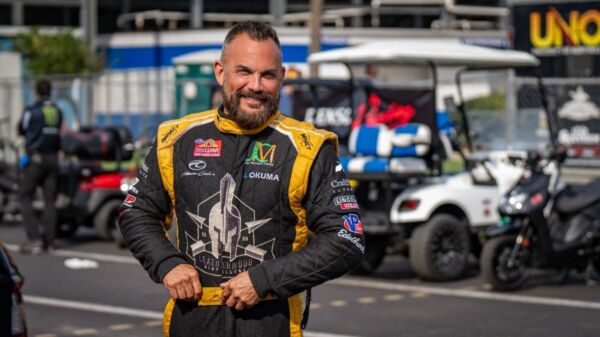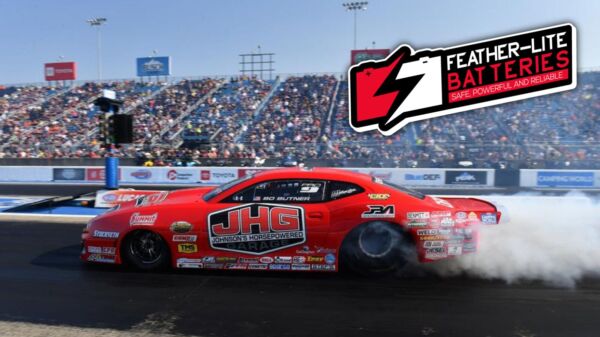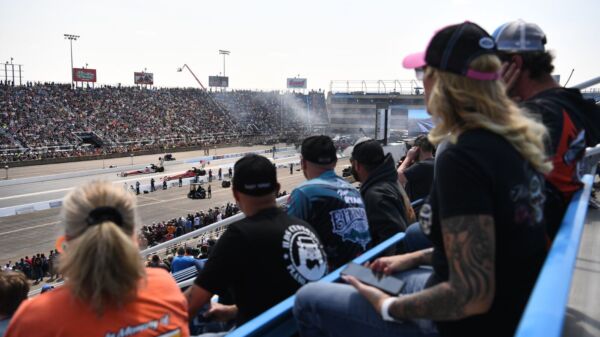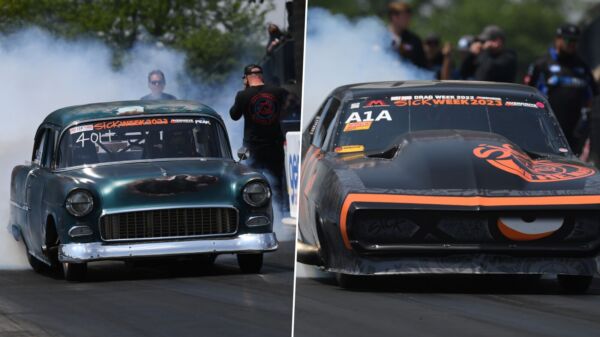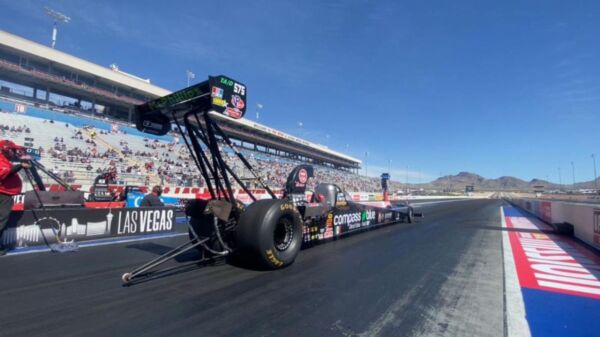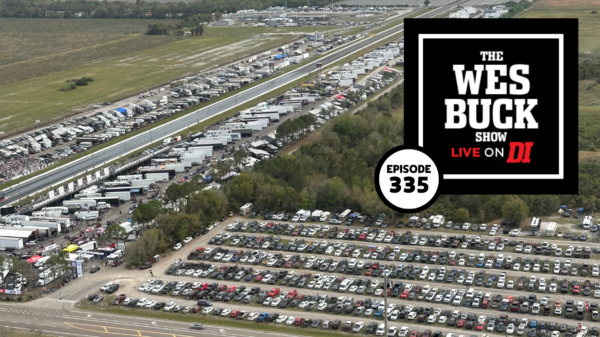Radial tire-based drag racing has developed a cult-like following and the niche community that surrounds the small tire world has grown to epic proportions. Today, radial racing is stronger than ever, but that’s mostly due to the efforts of a handful of diehard individuals relentless in their pursuit of seeing the eighth-mile format of the sport continue to manifest into something larger.
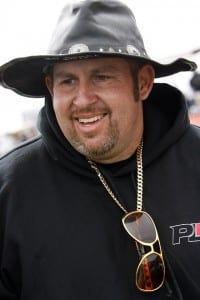
Donald Long
Arguably the most well-known driving force behind radial racing’s popularity is Donald “Duck” Long, a Florida-based event promoter who has been instrumental in getting “radials only” racing recognized beyond its own tight-knit community. Where once they raced in obscurity or as an afterthought in some other promoter’s event, thanks to Long’s belief, classes like Radial vs the World, Pro Drag Radial and Outlaw Drag Radial have become commonplace. John Sears, founder of the infamous X275 drag radial series, agrees that Long has been a key player in the growth and popularity of radial tire racing.
“People were looking for something different in heads-up racing,” Sears notes. “With the introduction of Donald’s first races in Florida, and his subsequent events in Georgia, the word spread. Donald’s ability to create controversy between slick tire guys and radial tire guys was huge. He struck while there was a need, and it took off.”
Sears himself, however, can also be credited with helping small tire racing to gain more mainstream recognition. The groundwork for what is today’s wildly popular X275 class was first laid in 2008 and Sears has been there every step of the way to ensure class rules encourage equal, fair and competitive racing.
What started off strong in its infancy has exploded into an unstoppable machine in recent years, but Long believes technology has been the main factor there. “I think the (online) live feed stuff has made radial racing a lot bigger. People can watch from anywhere,” he says. “We try to maintain the integrity of the racing but also understand people want entertainment. It’s the characters behind the racing that make the radial guys stand out, and that’s something that’s missing elsewhere in racing.”
Loved—or hated—for his ability to fill classes with unprecedented car counts and stands with thousands of spectators, Long’s reputation as a radial racing promoter extraordinaire has prompted many others to attempt the same. What began with just a handful of stand-alone events, however, has morphed into events being staged practically every weekend throughout the summer and fall, plus a dedicated radial-specific series. Regardless of the copycats, Long interprets the trend as a sign of strength for radial racing. “As much as I make fun of other guys piggybacking, they really do bring a lot of value to the sport,” he adds with a laugh.
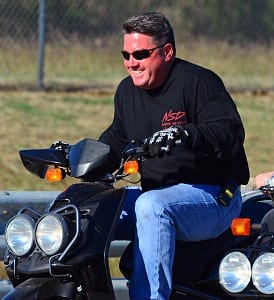
Gene Nicodemus
Along with Rodney Whatley, Gene Nicodemus, owner of North Star Dragway in Denton, Texas, founded the Radial Tire Racing Association (RTRA) to bring credibility and stability to the sport of radial tire drag racing. The RTRA ran its inaugural season in 2015 and featured classes such as X275, Limited 275 and Pro Drag Radial. “I think the real instigator for radial’s popularity was that everything used to be about big tires, then it went to the 10.5 slick, and, as everything always does, that plateaued,” Nicodemus says.
Track prep, too, has been a contributing factor to the success of radial tire racing’s growth. “A lot of people didn’t understand how to prep a track for radials. There’s a lot of knowledge that goes into radial prep, it’s not just throwing something on the ground and hoping it sticks,” says Nicodemus, who prides himself on having the best—and safest—surface possible at his track, regardless of weather or air conditions.
Lately, more tracks are getting on board with proper prep programs, meaning there are more facilities nationwide where radial racers can truly show their stuff. Some believe, however, that this actually waters down radial racing as a whole. Sears is quick to warn against dividing up the scene’s potential. “With more races, car counts will drop and guys won’t want to travel as far because the exclusivity of the big races simply won’t be there anymore,” he predicts.
“People want to put on a race every week, but if only four or five cars show up, it really takes away a lot overall,” says Long, agreeing with Sears’ sentiments. “I think it’s a money thing. Everyone has a right to put on a race, but just trying to make a couple dollars can hurt the sport with too many events on the calendar. If you had 20 Super Bowls, who would care about getting tickets or trying to play in it?”
Ironically, Nicodemus claims it’s for that reason that he founded the RTRA. He says he was looking to create a series that people could commit to, rather than hop all over from one stand-alone race to another. “These guys want to race for something and we wanted to give radial tire racing a place to remain pure. I also wanted to make it affordable to race on radials, because the X275 guys don’t have the budget that the Outlaw 315 guys do,” he shares.

Steve Wolcott
Additionally, the National Muscle Car Association (NMCA), under the direction of ProMedia founder, president and CEO Stephen Wolcott, helped elevate the radial tire scene to a national level when it announced in 2014 the addition of the Radial Wars class to its national-event series with its associated points championship.
Improved tire technology, too, is unquestionably among the many reasons for radial racing’s success. For years, Mickey Thompson Performance Tires & Wheels (M/T) has been a huge supporter of the sport, and its 275 and 315 drag radial tires are notorious for helping drivers lay down absolutely stunning elapsed times.
As radial racing’s popularity grows, and with more teams and drivers becoming involved, controversy surrounding rules and unfair advantages seems inevitable and omnipresent. As much as the rule makers, including Long and Sears, try to maintain parity, it’s a constantly moving target requiring extreme vigilance and refinement to maintain a level playing field. Weight changes based on power adders and chassis or suspension setup, restrictions on other components, and a multitude of other tweaks and adjustments have sparked many great Internet debates.
“The real deal is there’s a bunch of multi-millionaires who are crybabies when it comes to wanting a huge advantage. It’s not all of ‘em, but some want everything their way and that’s when a promoter or race organizer has to step in and do what he’s got to do to make it fair,” Long bluntly states. Looking back at the historical data shows the turbo cars, the supercharged cars, and the nitrous-oxide cars on radials have all been fairly competitive, he insists. “Let’s say one guy’s combination isn’t running at max effort; we have to think about what it could possibly do in the right hands. Just because this guy has it, doesn’t mean he’s the guy to make it go the fastest.”
Sears’ take on parity puts the racers first, with his focus on trying not to make them spend unnecessary money. “The hardest thing to do is reset the rules to the point where it takes your core groups and costs them a lot,” he says, keeping in mind his core clientele often work 40 to 60 hours each week just to remain able to continue to afford racing in his X275 series. “They’re all hard-working guys, and I hate that if we take something away, for example making someone have to buy a smaller turbo, they could just as easily buy another turbo the same size as what they already have, put on twins, and step up to the next class.
“A lot of guys get into it and realize it’s a lot more work than they thought it would be, so they fall back to another class or sell their car and get out,” Sears notes. To help keep things fair and make sure everyone has a chance to be competitive, he looks at the class as a whole when making his rule changes and adjustments. “Too many changes can run people off, though. We try to do a mid-year revision via weight to accommodate for new parts or discoveries and not take parts away that will impact their programs for the year.”
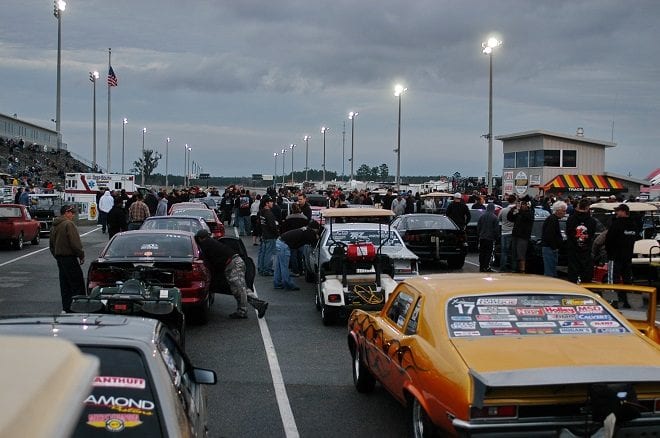
Meanwhile, Nicodemus says he puts a huge emphasis on safety when creating RTRA rules. “I’ve always relied on Donald [Long]’s rules to keep things fair, but there needs to be a larger safety aspect of it. Turbo cars are fixing to be in the 3.70s, and running at 3,100 pounds; well, it just doesn’t get any ‘unsafer’ than that,” he asserts. “I look at driver safety. I don’t listen to the ones complaining about who’s getting ahead.”
The incentive to run quicker and faster isn’t purely based solely on pride and bragging rights, either. There’s big money at stake. “Based on what these guys used to get paid for the amount of effort they put in, it was obscene. With 100 cars in a drag radial field and paying out $2,500 to win with a $200 tech card, well, there’s something significantly wrong with that,” Sears points out.
Promoters such as Long are now offering huge cash payouts upwards of $60,000 to the winner of Radial vs the World and similar classes. He remains concerned, however, that Radial vs the World could eventually evolve into an ongoing battle between the same six or seven millionaires racing each other, instead of the current 50 or 60 cars shooting it out. To try and ensure the class continues as a hotbed of activity for hotshoes, Long understands he can’t limit cars by chassis, transmission, or motor; he has to keep the rules open so it remains a battle of the “run what you brung” outlaw-style standouts.
“As the Radial vs the World class evolves, there’s more money coming in. Bigger, badder teams fighting for bigger, badder prizes. Guys that have been around a while are upset that this guy shouldn’t be allowed with this car, or they don’t like this guy’s chassis,” Long says. “You’ll unfortunately lose people along the way, but just because they can’t be competitive in Radial vs the World anymore doesn’t mean they can’t run Pro 275 instead. But I understand they feel like they’d be stepping down.”

John Sears
Sears agrees, but also believes the Pro 275 class, or other smaller classes, could be the next big things in radial tire racing. “I think we need to let the Radial vs the World guys be the straight-up gangsters on radials and let them do their thing, but that doesn’t mean the rest of the classes have to follow suit,” he says of the pinnacle class, which undeniably is cost prohibitive for many to enter. Working with Charlie Taylor and the Extreme Outlaw Series, Sears has been pitching in to launch a newer X235 class with a limited rule set and limited tire restrictions. “There will be some really savvy guys in that class, and I think it’ll be something that a lot of people will want to get involved with.”
Drivers can expect to see a resurgence of “everyman-friendly” classes in the coming years as more organizers and rule makers shift their focus to ensuring radial tire racing’s future, longevity and diversity. In the interim, though, the radial world definitely isn’t slowing down. “We have Tim McAmis and a lot of top-notch chassis builders putting out brand-new cars all the time. I see a future with a lot more full-chassis, Pro Mod-style cars on radials in it,” Long notes.
Nicodemus, however, believes there will be a shift toward more grudge and no-prep racing in the short-term, while Sears is wary that certain areas of the radial world may be getting ready to taper off. “It used to be about car setup and driver skill, now it’s just about how much money you can throw at it,” he suggests.
Fads and trends are usually short-lived; they shine brightly for a brief moment in history before burning out in a spectacular display of nothingness. Radial tire racing, however, is most certainly not a fad. It was around long before the current wave of popularity and no doubt will remain if the trend ever reverses. The niche has refused to fade into obscurity, instead becoming a mainstay in drag racing that will continue to push the envelope on performance.
This story originally appeared in Drag Illustrated Issue No. 111, the State of Drag Issue, in June of 2016.
This story was originally published on December 29, 2016. 
